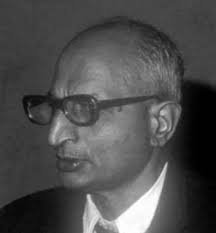The Communist who authored Muslim League’s manifesto stayed back in India….


It is often said and believed that party manifestos in Pakistan only play a rudimentary role. But during the 1946 elections in British India, the manifesto of Pakistan’s founding party, the All-India Muslim league (AIMl), played in galvanising activists and voters. The Muslim League’s victory in all the Muslim-majority areas of undivided Punjab in these elections was the catalyst that hurried the creation of Pakistan in 1947.
The manifesto was originally published on October 31, 1944, which was largely written by a small group of ideologues headed by a Muslim member of the Communist Party of India. The mastermind was Danial Latifi, who was a Communist with Islamic leanings and his entry into the AIMl had been green-lighted by party chief Muhammad Ali Jinnah.
The manifesto spoke of a Pakistan which would be beneficial for both Muslims as well as non-Muslims under the AIMl rule. It also highlighted that the State under AIMl “will be the alter-ego of the national being and in good time the two would merge to form an ordered and conflict-free society.” The manifesto explained how Pakistan as a country, was to be formed by a cornered Muslim minority. The manifesto added that a country shaped by a minority of India would be more appreciative and understanding of the plight of all minority faiths in the region than a country run by an emerging “upper-caste Hindu majoritary.”
As AIMl’s manifesto was “for opportunistically attempting to placate every conceivable interest group”, it was largely successful in attracting the local population in muslim-majority areas. By 1946, not only was the manifesto able to attract Muslims of almost all classes, but many Christians and Zoroastrians and “scheduled class Hindus” (especially in Bengal) too had joined the party.
Danial Latifi was born in Lahore and travelled to Oxford University in England to study law. After returning to India, he joined the CPI. He was one of the most vocal members of the CPI who advocated that the party support AIML. In 1944 he resigned from the CPI and joined the AIML. Communist Party’s cadres, dispatched to the help the Muslim League against the Unionists, like Daniyal Latifi and Sajjad Zaheer actually spearheaded the League’s campaign in Punjab. In this pursuit Latifi married ideas of bourgeoisie Muslim economic advancement (through meritocracy) to Mohammad Iqbal’s idea of ‘spiritual democracy’.
Ironically, Latifi, who was one of the architects of this victory and a passionate supporter of Pakistan’s creation, did not move to the new country. The same Daniyal Latifi then went onto represent Shah Bano in the Indian Supreme Court long after independence winning her a historic verdict, which was overturned by the secular Congress.
He was a grandson of Badruddin Tyabji, one of the early presidents of the Indian National Congress, and was influenced greatly in his life and work by Mian Iftikharuddin, who was president of the Punjab Pradesh Congress Committee when Latifi returned from England to start his career in Lahore. Iftikharuddin was respected by the Communist Party towards which Latifi gravitated and by the Muslim League which Iftikharuddin and, for a while, Latifi later joined. Latifi’s political activities during this period took their cue from Iftikharuddin. But he returned to Bombay, the original seat of his family, somewhat before Partition.
The history by the liberal Academia has been kind to absolve his sins of Partition horror. Latifi was constantly asked why, but he always refused to answer this question. Latifi died in 2000 at the age of 83, however he never visited Pakistan, what his known ones claim.
DISCLAIMER: The author is solely responsible for the views expressed in this article. The author carries the responsibility for citing and/or licensing of images utilized within the text.
